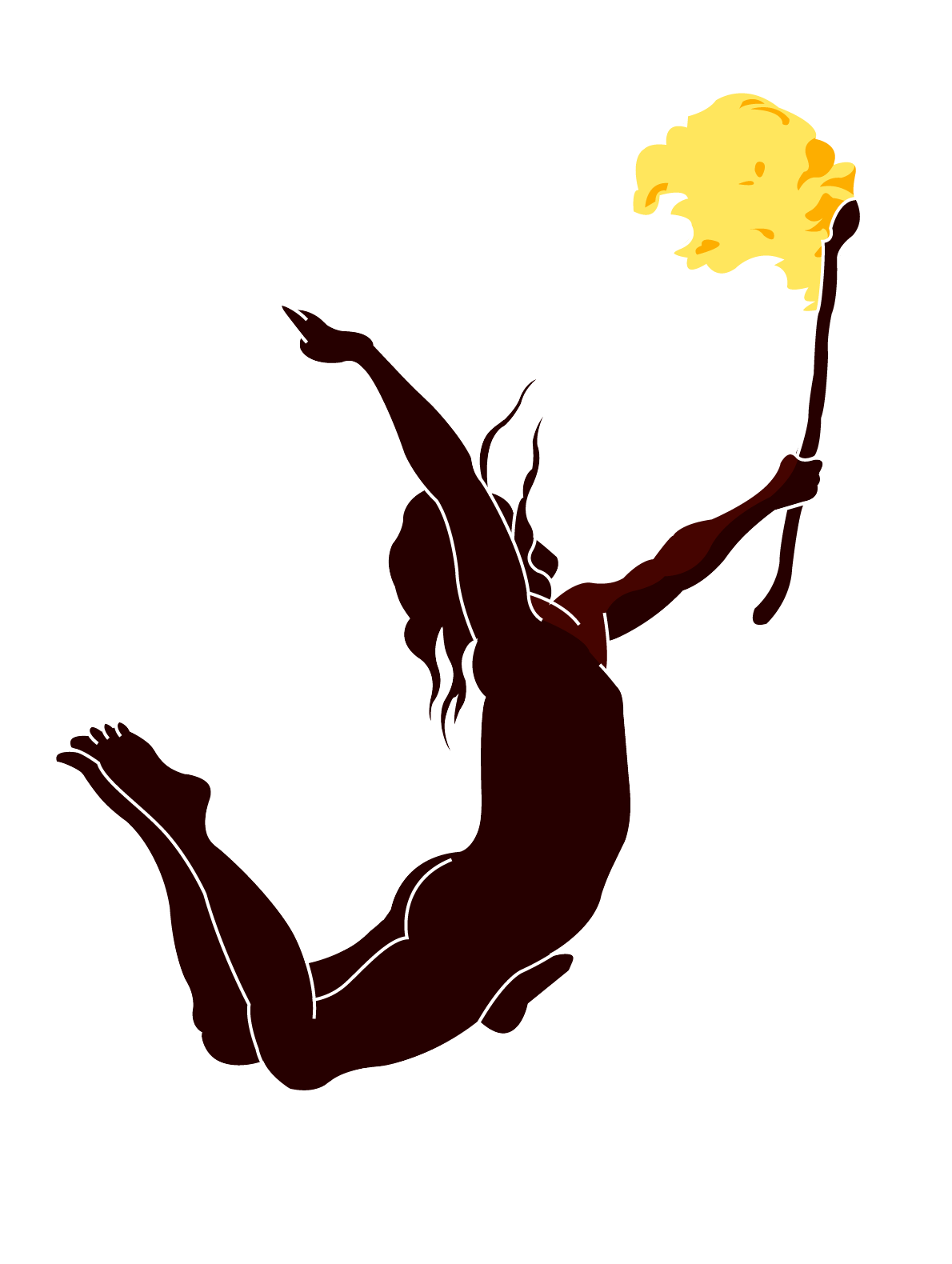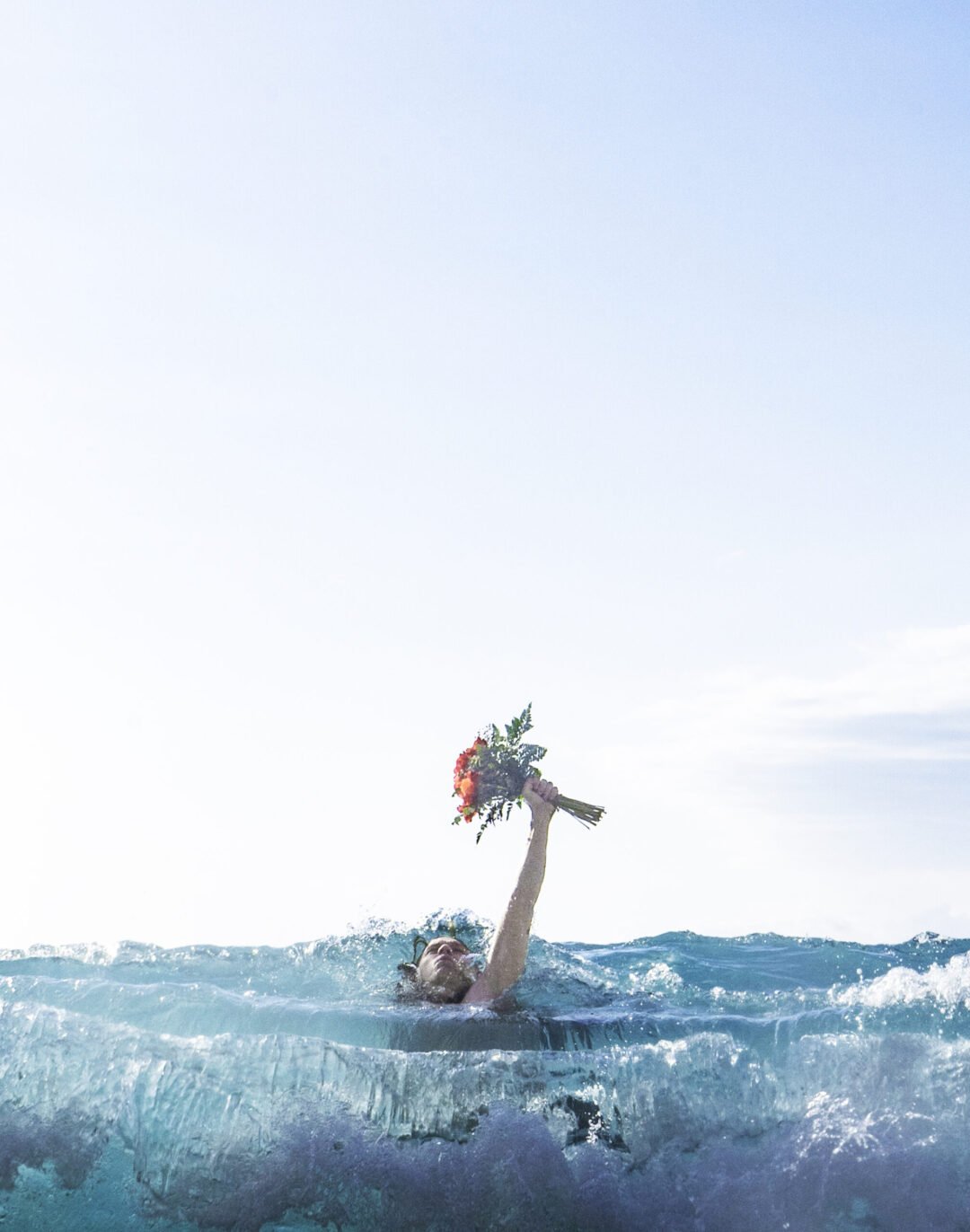Art on the horizon
La Conciergerie – La Motte-Servolex
October 2 to December 18, 2021
Exhibition view, Photos Anne-Laure Wuillai
Group show with artists BEN, Olivier Mosset, Claude Viallat, Geoffrey Hendricks, Benoît Barbagli, Tom Barbagli, Gérald Panighi, Charlotte Pringuey-Cessac, Marc Chevalier, Franck Saïssi and Anne-Laure Wuillai.
Curator: Eva Vautier
This imaginary line represents the junction between sky and land or sea from the viewer’s perspective. This limit of the world, which never stops moving with us, always seems within reach. At once a frontier and a future, the horizon has pushed man’s curiosity beyond his own world to see what lies beyond.
One of Ben Vautier’s earliest works is a line dated 1955, which he later signed L’horizon sur la Promenade des Anglais in 1962. The skyline becomes a work of art and his property. As the gesture was repeated many times, many horizons became his. It’s a starting point for the artist’s journey into the deeper worlds of everyday life. Starting with the landscape that surrounds him, he moves on to the philosophy of human nature, eventually exploring the depths of the soul. The gestures and words that make up Ben’s work may seem trivial, commonplace, even mundane, but they are systematically thought-provoking.
This exhibition brings together Ben’s historic works, as well as previously unpublished ones, and those of ten artists who approach their artistic world with the same impetus, while seeking answers in different horizons. L’art à l’horizon will also take you into the worlds of Gérald Panighi, Benoît Barbagli, Charlotte Pringuey-Cessac, Tom Barbagli, Olivier Mosset, Marc Chevalier, Anne-Laure Wuillai, Claude Viallat, Franck Saïssi and Geoffrey Hendricks.
Eva Vautier, curator
Art on the horizon | l’horizon de l’art
The straight line, often the easiest path to take and the most difficult to trace, forms a demarcation, a border. It is represented by a starting point and an end point linked by a line. Both boundary and link, like the horizon, the fictitious line between heaven and earth, it’s the beginning of the mystery. To appropriate the horizon, as Ben Vautier did when he signed it in 1962, to make it concrete with a stroke, is to create a gesture that masters the limit, gives a direction, then a meaning. Through the gesture, or action, of signing what has not been claimed, Ben embraces several artistic currents such as Marcel Duchamp’s “ready-made” and the international Fluxus movement, which found a headquarters in France in his store on rue Tonduti-de- l’Escarène. Fluxus advocated non-art or anti-art, and campaigned to erase the boundary between art and life. It’s a movement of energy to embrace the fluidity between artistic expressions, breaking down the barriers between the arts and what is considered a work of art. This is how limits and boundaries are always explored, pushed back and challenged. The group takes precedence over the artist’s individuality, but the ego doesn’t disappear altogether, as Ben clearly asserts. The path we’re about to follow begins with dashes and dots, and wanders through the history of contemporary art to gain a better understanding of just how vital art is to the future of mankind.
In the beginning, there’s the point, the anchor. Olivier Mosset has depicted it as a circle on canvas.
The beginning of a line that we can easily imagine as the transcription of the first conscious trace left by Man to last. Charcoal in hand, the primitive gesture depicted by Charlotte Pringuey- Cessac in a video, “Ligne”, finds its place as an introduction to the exhibition, materializing the horizon line that primitive Man discovered when he straightened up, urging him to discover a distant landscape. Like Benoît Barbagli, he will survey the territory, climbing mountains in search of a suitable place to create a collaborative work with nature by throwing ink and then thanking it with bouquets of flowers, offerings to vital forces. Blocked by the water, the man analyzes it in an attempt to cross it. He then encountered some of the work of Anne-Laure Wuillai, who catalogs the colors of the coastline, the waters and creates waves, all with as much scientific rigor as beauty and delicacy of nuance.
Franck Saïssi takes visitors on a fantastic expedition through his Indian ink drawings. The ship sails on a calm sea, the men are attracted by a phenomenon, drawn by the sky. It’s a journey into the intimate, spiritual world. Tom Barbagli’s marine compass guides us through the exhibition. His work, based on a solid knowledge of engineering, twists technology to add poetry to everyday objects and phenomena. His works are a perfect introduction to those of Geoffrey Hendricks; an artist also associated with the Fluxus movement, he worked on the sky by making everyday representations of it, a “cloudsmith”.
The heavens have always fascinated mankind, often representing the divine, the spiritual, the incorporeal and eternal, what Dante defines as “incorruptible things” in The Monarchy.
In contrast, earth represents the corporeal, the material and time, “corruptible things”. Man, for his part, has a special place, being “the only being that occupies the middle ground between corruptible and incorruptible things; this is why philosophers rightly liken him to the horizon, which is in the middle of the two hemispheres.”
Claude Viallat’s rope helps us move between these two worlds. Marc Chevalier, on the terrestrial side, accumulating strokes, has created a network of superimposed paths, a labyrinth that also traces a reading grid. The accumulation of limits gives rise to structured organization and communication, since there are so many junctions. Figuratively speaking, the line represents a means of articulating thoughts and concepts. It allows us to explore the outside world and probe the inner world of the human being who inhabits it.
It was the organization of the strokes that formed the first cuneiform script. It then evolved, the joining of distinct signs giving rise to other scripts. It’s in the curve that the modern layout of our alphabets will be made, in particular, that so recognizable of Ben’s writing. From being a limit, the line naturally became a link, a means of communication and expression. A worthy representative and promoter of Fluxus, Ben fully adheres to the manifesto edited by George Maciunas, notably in the desire to “PROMOTE A REVOLUTIONARY FLOOD AND TIDE IN ART.” The promotion of “living art, anti-art, promoting NON-ARTISTIC REALITY so that it can be understood by all people, not just critics, dilettantes and professionals.”
Gérald Panighi’s illustrations, combined with quotations, focus on both the superficial and profound aspects of human nature, and their quirkiness makes them funny. The humor is often dark and self-deprecating, but rarely mean-spirited.
Presented in a cloud, these illustrated thoughts echo those of Ben. These timeless phrases, combined with the almost obsolete drawings, place visitors back in the “Here” and the “Now”. They encourage him, like Ben, to ask questions and reflect on their situation, condition and history.
Exploring in different directions, the artistic paths came together around Ben.
From the straight line to the curve of the sea, leaps into the void, the movements of the sky and the planets, the artist necessarily rethinks Man’s place in his universe. By looking back on the creation, the viewer comes face to face with its creator. By running in pursuit of this unattainable goal, because it’s always in motion, we’re exploring the source of humanity, its motivations and concerns.
This horizon was initially a promise of a better and different world for the first explorers, and the path we have travelled is systematically an opportunity to reflect on our own journey, the encounters we make and the lessons we learn from them. On the temple at Delphi it was inscribed “Know thyself and thou shalt know the Universe and the Gods”. The opposite makes sense in our world, where man is beginning to realize that he is a tiny part of his universe and owes his existence to what surrounds him.
https://benoit-barbagli.com/wp-content/uploads/2022/07/Sans-titre-7-scaled.jpg

